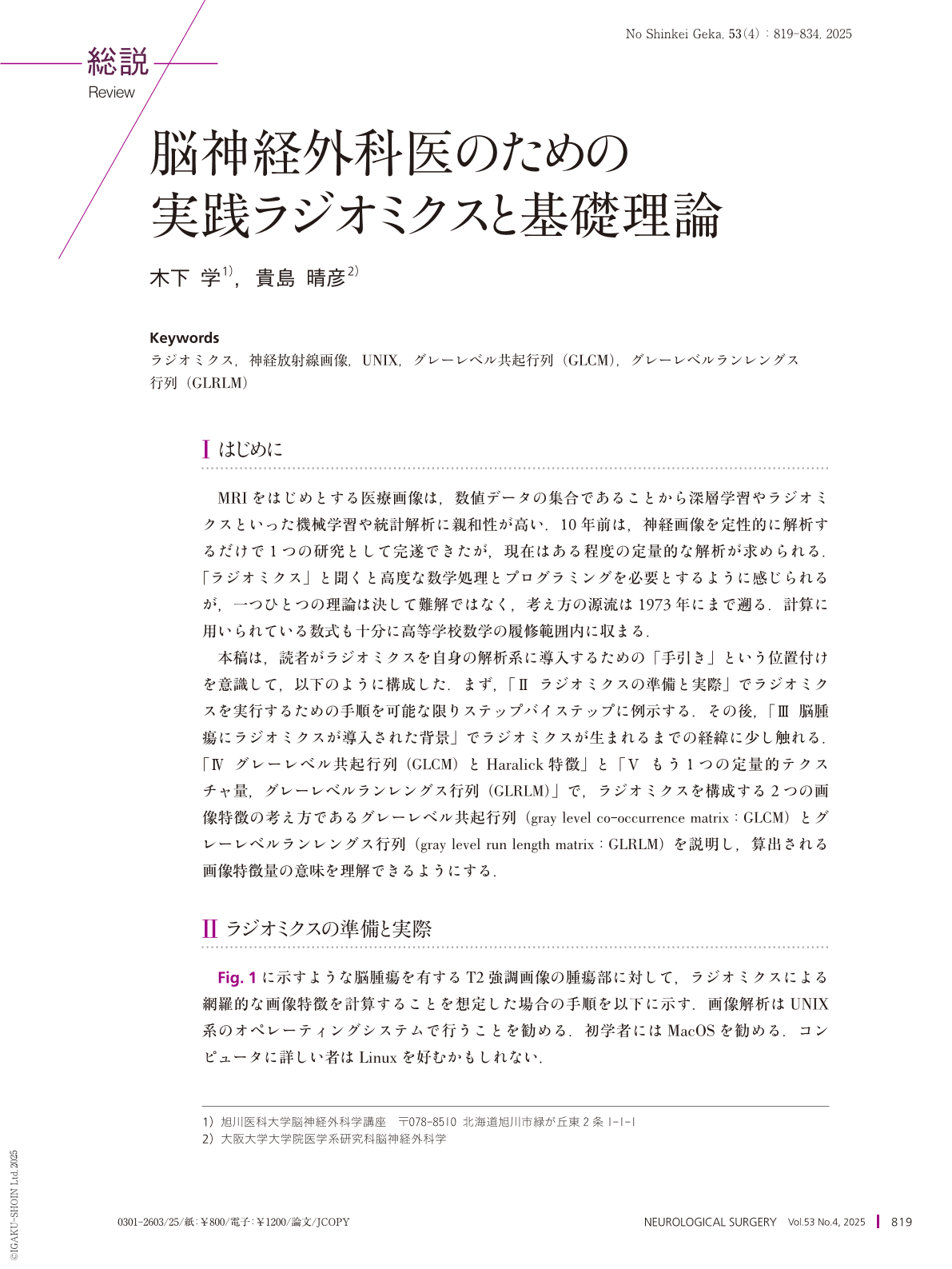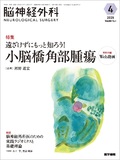Japanese
English
- 有料閲覧
- Abstract 文献概要
- 1ページ目 Look Inside
- 参考文献 Reference
Ⅰ はじめに
MRIをはじめとする医療画像は,数値データの集合であることから深層学習やラジオミクスといった機械学習や統計解析に親和性が高い.10年前は,神経画像を定性的に解析するだけで1つの研究として完遂できたが,現在はある程度の定量的な解析が求められる.「ラジオミクス」と聞くと高度な数学処理とプログラミングを必要とするように感じられるが,一つひとつの理論は決して難解ではなく,考え方の源流は1973年にまで遡る.計算に用いられている数式も十分に高等学校数学の履修範囲内に収まる.
本稿は,読者がラジオミクスを自身の解析系に導入するための「手引き」という位置付けを意識して,以下のように構成した.まず,「Ⅱ ラジオミクスの準備と実際」でラジオミクスを実行するための手順を可能な限りステップバイステップに例示する.その後,「Ⅲ 脳腫瘍にラジオミクスが導入された背景」でラジオミクスが生まれるまでの経緯に少し触れる.「Ⅳ グレーレベル共起行列(GLCM)とHaralick特徴」と「Ⅴ もう1つの定量的テクスチャ量,グレーレベルランレングス行列(GLRLM)」で,ラジオミクスを構成する2つの画像特徴の考え方であるグレーレベル共起行列(gray level co-occurrence matrix:GLCM)とグレーレベルランレングス行列(gray level run length matrix:GLRLM)を説明し,算出される画像特徴量の意味を理解できるようにする.
Medical images, including magnetic resonance imaging scans, are composed of numerical data, making them well-suited for machine learning and statistical approaches such as deep learning and radiomics. While qualitative analysis of neurological images may have been sufficient for research a decade ago, current standards increasingly demand some level of quantitative analysis. Although the term “radiomics” may imply complex mathematical processing or advanced programming, its foundational concepts are surprisingly accessible, with origins tracing back to 1973. The mathematical formulas used in radiomic feature are generally within the scope of high school-level mathematics. This paper provides a framework for individuals keen on integrating radiomics into their analytical methodologies, structured in the following manner: In Section Ⅱ a detailed, methodical example of the procedures involved in conducting radiomic analysis is provided. Section Ⅲ provides a brief overview of the historical development of radiomics. Sections Ⅳ and Ⅴ explore the two image feature concepts that underpin radiomics: the gray level co-occurrence matrix and the gray level run length matrix, providing readers a deeper understanding of the significance of the calculated image features.

Copyright © 2025, Igaku-Shoin Ltd. All rights reserved.


